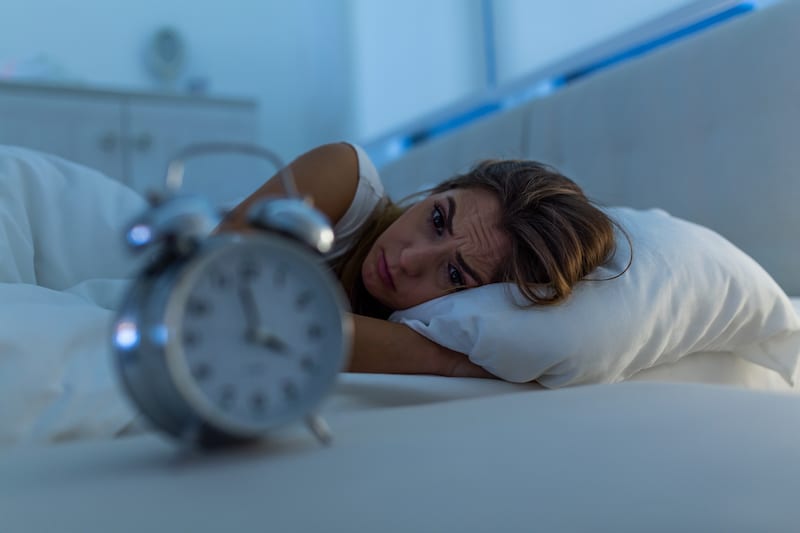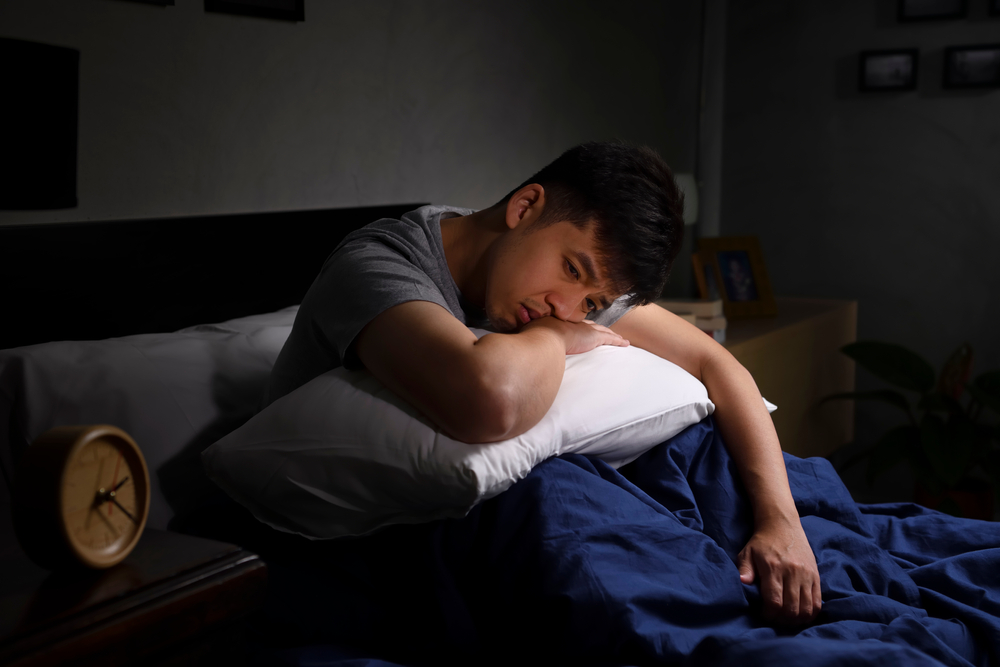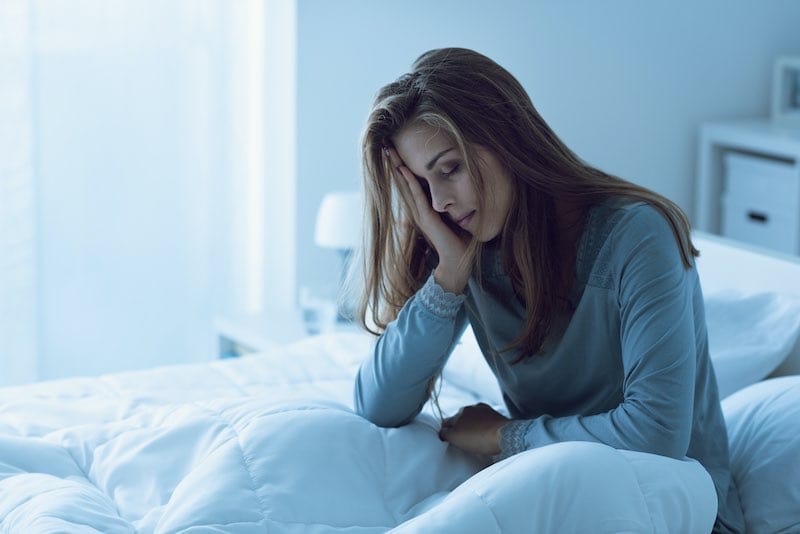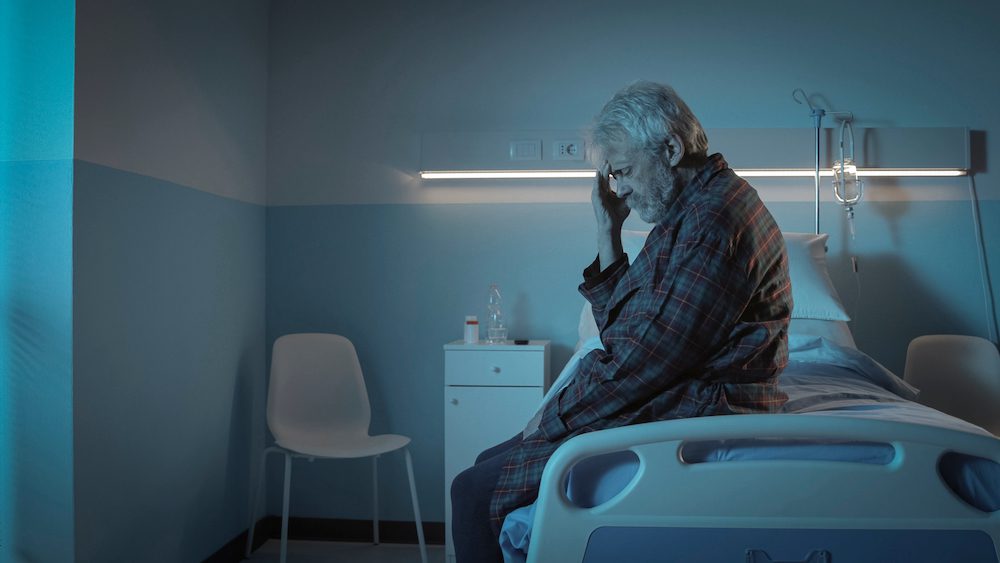Insomnia: Symptoms, Causes, and Treatments
- Insomnia is defined as difficulty either falling or staying asleep that is accompanied by daytime impairments.
- Nighttime insomnia symptoms can include trouble sleeping and early waking.
- Daytime insomnia symptoms may include fatigue, impaired memory, and irritability.
- There is no single established cause of insomnia, and insomnia disorders can often occur alongside other health conditions.
Insomnia is one of the most common health concerns among adults. Insomnia causes sleep issues that interfere with daily life and can be debilitating for some people. Many factors may contribute to insomnia, including stress, medications, and an individual’s sleep habits and environment.
Struggling to Stay Awake? Take an At-Home Sleep Test
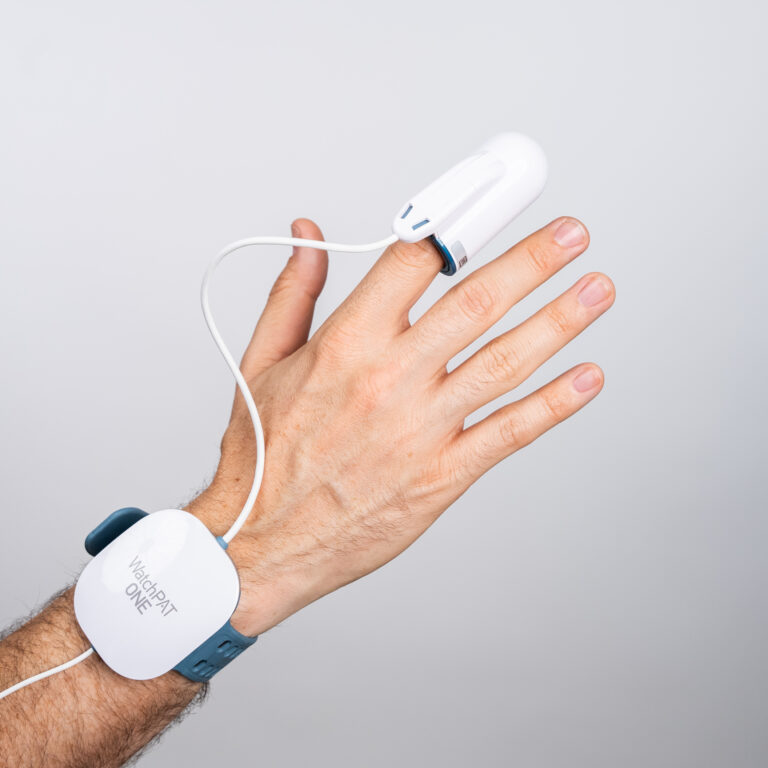
our partner at sleepdoctor.com
Black Friday Sale: 20% off Home Sleep Tests
Buy Now“Truly grateful for this home sleep test. Fair pricing and improved my sleep!”
Dawn G. – Verified Tester
What Is Insomnia?
Insomnia is a sleep disorder characterized by difficulty falling asleep, staying asleep, or both, even if you have ample time and a bedroom environment conducive to restful sleep. An insomnia diagnosis requires these sleep troubles to also cause daytime impairments, such as sleepiness or difficulty concentrating.
Up to two-thirds of people occasionally experience insomnia symptoms. These bouts of sleeplessness may or may not meet the criteria for a formal diagnosis of insomnia, depending on how long they last and whether they cause distress or interfere with daily functioning. But it is important for anyone who has concerns about their sleep to discuss them with a health professional for proper diagnosis and treatment.
A doctor can ask questions to better understand your situation and order tests to determine if an insomnia diagnosis is appropriate. Symptoms of insomnia can overlap with symptoms of other sleep disorders, so it is important to work with a professional rather than attempting to self-diagnose.
Insomnia that goes untreated, leading to long-term sleep deprivation, is linked with a number of harmful effects , including lower quality of life and increased risk for substance abuse, chronic pain, heart disease, and diabetes.
Risk Factors for Insomnia
While there is no single cause of insomnia, studies have identified factors that can put a person at a greater risk for experiencing insomnia . These include, but are not limited to:
- Being a woman or assigned female at birth
- Older age
- Lower socioeconomic status
- Medical conditions like diabetes and chronic pain
- Other sleep disorders such as restless legs syndrome and sleep apnea
- Mood disorders including depression and anxiety
- Having an immediate family member with insomnia
It is important to note that not everyone who has one or more of these risk factors will have insomnia, and not everyone with insomnia will have one of these risk factors.
How Is Insomnia Diagnosed?
Doctors generally diagnose insomnia by evaluating a person’s sleep habits and medical history.
Typically, a patient’s description of their symptoms informs their insomnia diagnosis. A doctor may instruct patients to keep a sleep diary for a week or more, which can provide insight about a person’s sleep duration, perceived sleep quality, and lifestyle choices that may contribute to sleep problems. Other self-reporting diagnostic tools, including the Pittsburgh Sleep Quality Index, may be used by medical professionals in a clinical setting to determine the severity of insomnia symptoms.
If a doctor needs to rule out other sleep disorders that could be causing a person’s symptoms, other assessments, such as a sleep study, may be ordered.
Treatments for Insomnia
Treatment for insomnia depends on how long a person has been experiencing sleep issues and any specific factors that are contributing to their sleep loss. If insomnia is associated with another condition, such as sleep apnea or depression, treatment of the other condition often improves sleep.
It is important to get help with insomnia sooner than later. For people with short-term insomnia, care may be focused on discussing practices to support sleep hygiene. Temporary use of a prescription sleep aid may be an option if the insomnia is causing high levels of concern or distress. People with insomnia may also benefit from cognitive behavioral therapy for insomnia (CBT-I).
A few treatment approaches are available for people with insomnia that persists for weeks or months.

Still have questions? Ask our community!
Join our Sleep Care Community — a trusted hub of sleep health professionals, product specialists, and people just like you. Whether you need expert sleep advice for your insomnia or you’re searching for the perfect mattress, we’ve got you covered. Get personalized guidance from the experts who know sleep best.
References
4 Sources
-
Bonnet, M., & Arand, D. (2022, April 15). Risk factors, comorbidities, and consequences of insomnia in adults. In R. Benca (Ed.). UpToDate., Retrieved June 5, 2023, from
https://www.uptodate.com/contents/risk-factors-comorbidities-and-consequences-of-insomnia-in-adults -
American Academy of Sleep Medicine. (2014). The International Classification of Sleep Disorders – Third Edition (ICSD-3). Darien, IL.
https://aasm.org/ -
Bjorøy, I., Jørgensen, V. A., Pallesen, S., & Bjorvatn, B. (2020). The prevalence of insomnia subtypes in relation to demographic characteristics, anxiety, depression, alcohol consumption and use of hypnotics. Frontiers in Psychology, 11, 527.
https://pubmed.ncbi.nlm.nih.gov/32265811/ -
Bonnet, M. H., & Arand, D. L. (2021, June 18). Evaluation and diagnosis of insomnia in adults. In R. Benca (Ed.). UpToDate., Retrieved June 5, 2023, from
https://www.uptodate.com/contents/evaluation-and-diagnosis-of-insomnia-in-adults




